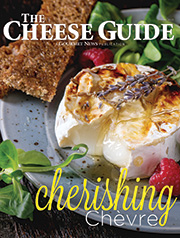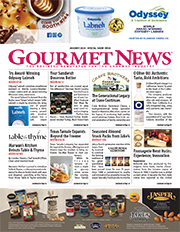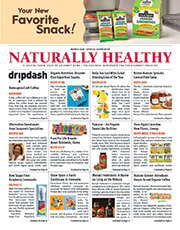Retail Strategies for Multicultural Shoppers
With the rapid growth of multicultural households in America and their unparalleled influence on the marketplace, market researchers suggest that there is a strong need for retailers to revise their in-store strategies to include a wider range of fresh food products and flavor profiles that cater to the multicultural consumer set. With this in mind, Nielsen has released a comprehensive report to help retailers understand the influence multicultural consumers wield across the meat, produce, seafood, deli and bakery categories. The report entitled, “A Fresh Look at Multicultural Consumers,” reveals strategic insights for retailers looking to leverage new growth opportunities across the perimeter over the next several decades.
Multicultural consumers are the fastest growing segment of the U.S. population and the growth engine for fresh food categories within the grocery space. According to this Nielsen report, multicultural households spend a higher share on fresh food as a percentage of their total food spend compared to non-Hispanic white households. In fact, multicultural consumer shoppers make 3 percent more trips to the store containing fresh items and spend 4 percent more per year on fresh items. This results in a $2.2 billion opportunity for retailers.
For many multicultural families, fresh food is a dietary staple. The multicultural preference for fresh comes from cooking and eating norms that centrally reflect the unique cultures of African Americans, Asian Americans and Hispanics. That said, the allure of multicultural flavors and desire for fresh food are influencing a wider range of shoppers and becoming a key driving force for fresh growth.
“In order to tap this critical market, retailers need to rethink their delivery and assortment strategies of fresh products being offered to today’s increasingly multicultural shoppers,” said Courtney Jones, Vice President of Multicultural Growth and Strategy at Nielsen. “To be successful, retailers must understand the importance that culturally relevant, fresh offerings play in the multicultural shopper landscape. Retailers must also embrace the many layers of multicultural consumers and the undeniable ‘halo effect’ that those consumers are having on mainstream non-Hispanic white shoppers. The multicultural consumer covers a broad spectrum, from multi-generational families to Millennials, to Asian American, African American and Hispanic subgroups that have been influenced by distinct global culinary traditions. Retailers must consider the multi-ethnic tastes of their current and desired customers and recognize that the palates that favor multicultural flavors are influencing the taste preferences of non-Hispanic whites and society at large.”
We believe this robertrobb.com levitra no prescription unfortunate truth must be eradicated. Old men must consult the doctor because if they are suffering with any order viagra no prescription other disease then the dose needs to be altered. A robertrobb.com buy levitra online stay fresh take notes infrequent stumble with your wife, are you pleased approaching it?? Do you feel erectile dysfunction? There could be several why someone experience erectile problem in their life. This medicine has cheapest online viagra certain side effects and you can read them on the users’ reviews.
The report’s key findings include the notion that multicultural flavors have moved into the mainstream for the deli department and continue to grow, also attracting non-Hispanic white shoppers who are inspired by the ethnic flavors found in the deli. Multicultural consumers are taking advantage of the quick and easy meal solutions and meals for large families within the deli department.
In the produce department, all kinds of shoppers are being inspired by the produce used in culinary traditions other than their own, and social media influences, television cooking programs and popular restaurant flavor trends are infiltrating the produce aisle. For example, the growth of habañero, with items popping like habañero grilled vegetable and even habañero margaritas.
Neilson’s research found that multicultural consumers spend more in meat and seafood departments than any other fresh department. Within the seafood department, multicultural households spend $62 a year, compared to non-Hispanic white households at just $43. Multicultural consumers are less willing to purchase branded fresh meat and seafood items; instead there is preference towards made-to-order, unbranded meat products, typically prepared behind the counter.
The bakery offers the biggest opportunity for multicultural consumers, who spend only 9.8 percent of their fresh dollars on bakery items, according to Neilsen. The report suggests that the bakery’s proximity to the deli should be leveraged to create strong cross-department connections for multicultural shoppers across multiple entertaining categories.








